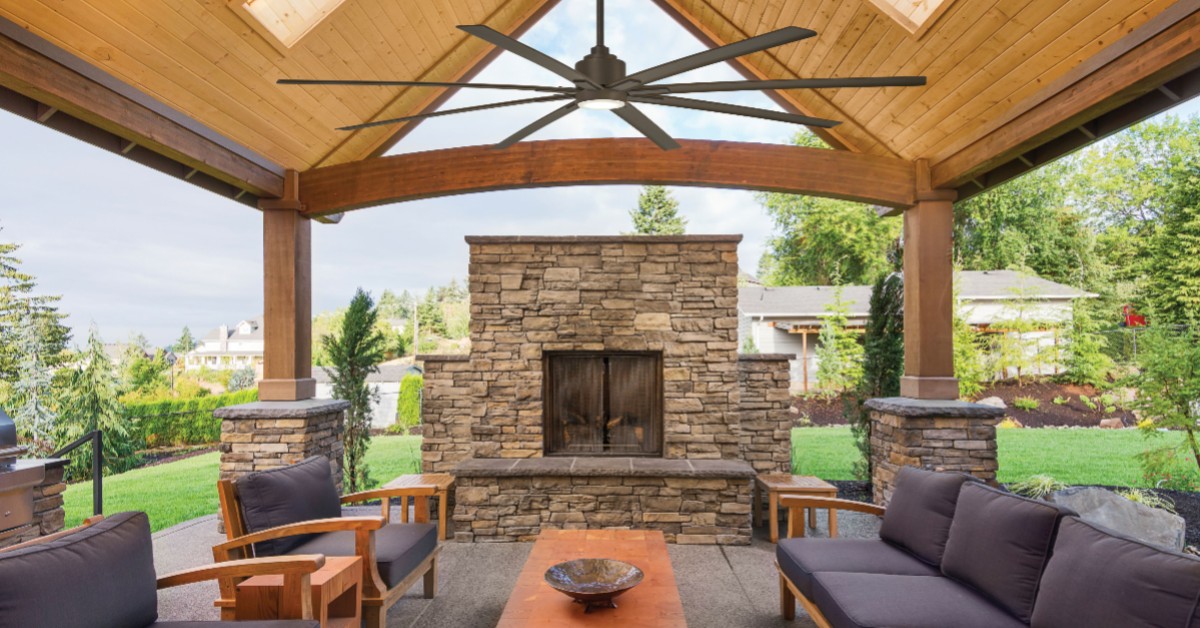How an Outdoor Ceiling Fan Can Make Your Summer More Enjoyable
When the temperature increases, it will become more important to have a ceiling fan that is both functional and powerful. A ceiling fan without power will not be sufficient to cover a large area when the heat is unbearable.
A high-powered outdoor ceiling fan will make your outdoor living space much more bearable during the scorching summer heat. Keep reading to find out what makes an outdoor ceiling fan different and how it can help you stay cool this summer.

What Makes an Outdoor Ceiling Fan Different From Other Ceiling Fans?
Outdoor ceiling fans are designed to move a large amount of air to cool down space quickly. The blades on a high-powered outdoor ceiling fan are wider and longer than those on a regular indoor ceiling fan, allowing them to move more air.
Another difference between an outdoor and indoor ceiling fan is that outdoor fans are built to withstand the elements, like rain, humidity, and dust. This means that they tend to be more expensive than indoor fans, but they’re worth the investment if you want a fan that will last for years without needing repairs or replacement.
Why Do You Need an Outdoor Ceiling Fan?
If you spend any amount of time outside during the summer, then you know how important it is to have a way to keep cool. An outdoor ceiling fan effectively beat the heat because it circulates the air and makes the space feel cooler.
It is also more energy-efficient than other cooling methods, like air conditioners. If you’re looking for a way to save money and stay cool this summer, invest in a high-powered outdoor ceiling fan.
These fans are an essential for anyone who wants to enjoy their summer outdoors. They are built to move a large amount of air, making them perfect for beating the heat. They’re also more energy-efficient than other cooling methods, so you can save money while staying cool and comfortable all summer long.
How Do I Know If An Outdoor Ceiling Fan Will Fit My Space?
When selecting an outdoor ceiling fan, you’ll want to consider the size of your space and the height of your ceilings. If you have a large space, look for a fan with a blade span of 60 inches or more. If you have smaller spaces or lower ceilings, look for a fan with a blade span of 36 inches or less.
The Many Uses of Outdoor Ceiling Fans
Many people don’t realize that outdoor ceiling fans are not just for decks and patios. In fact, there are a variety of ways to use an outdoor ceiling fan, both inside and outside of the home. Here are just a few ideas:

On the Deck or Patio
One of the most common places to use an outdoor ceiling fan is on the deck or patio. This is because a ceiling fan can help to circulate the air and keep people cool while they enjoy the outdoors. Ceiling fans with a light attached are also popular for decks and patios because they provide light and air circulation in one unit.
In the Garden
Another great place to use an outdoor ceiling fan is in the garden. If you have a gazebo or pergola in your garden, hanging a ceiling fan will help to keep you cool while you enjoy your time outdoors. Additionally, if you have plants that need to be protected from frost, an outdoor ceiling fan can help to circulate the air and keep them from getting too cold.
In the Garage or Workshop
If you have a garage or workshop, it can get pretty hot there during the summer months. An outdoor ceiling fan can help to circulate the air and keep you cool while you work. Additionally, if you have paintings or other delicate items stored in your garage or workshop, an outdoor ceiling fan can help to keep them from getting damaged by heat and humidity.
As you can see, there are many ways to use an outdoor ceiling fan inside and outside the home. So if you’re looking for a way to stay cool this summer, consider investing in an outdoor ceiling fan. You won’t be disappointed.
What Are Some Additional Features To Look For In An Outdoor Ceiling Fan?
In addition to size and blade span, there are a few other features you’ll want to consider when selecting an outdoor ceiling fan. First, pay attention to the CFM (cubic feet per minute) rating; this will tell you how much air movement the fan can create. Second, take note of the number of blades; more blades means more air movement but can also create more noise. Lastly, consider any additional features that might be important to you such as remote controls, light kits, and energy-efficiency ratings.

I am Scott Miller and my love is writing about home improvement. I write mostly about home ideas, but also share some tips and tricks that can make your life easier when it comes to getting things done in the house.












